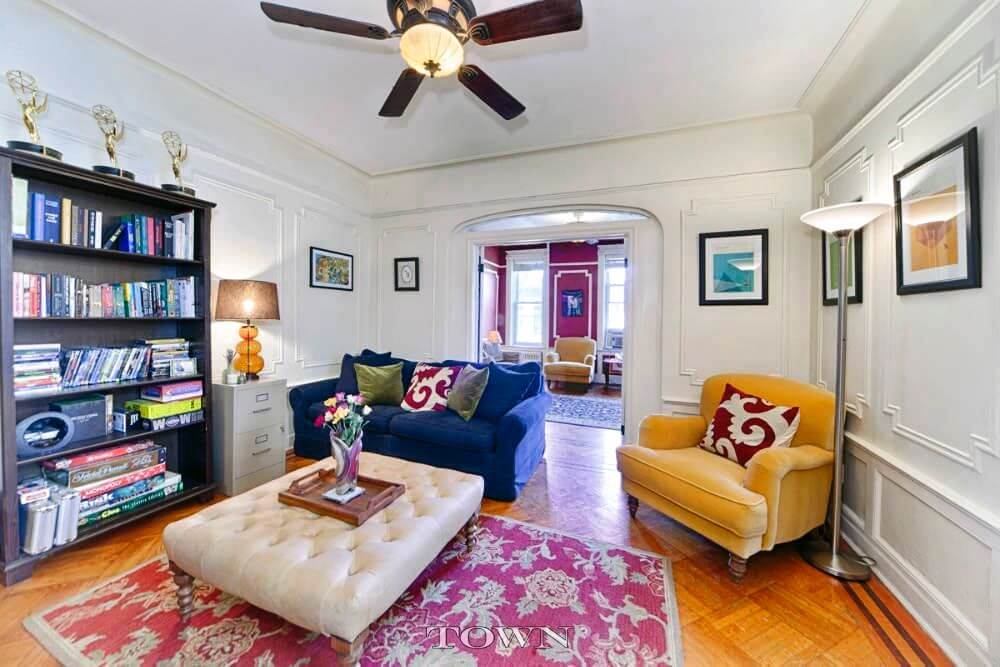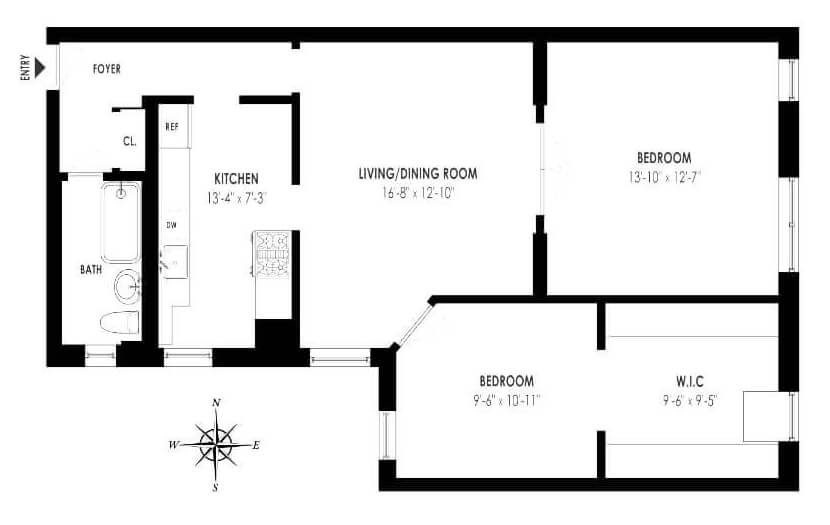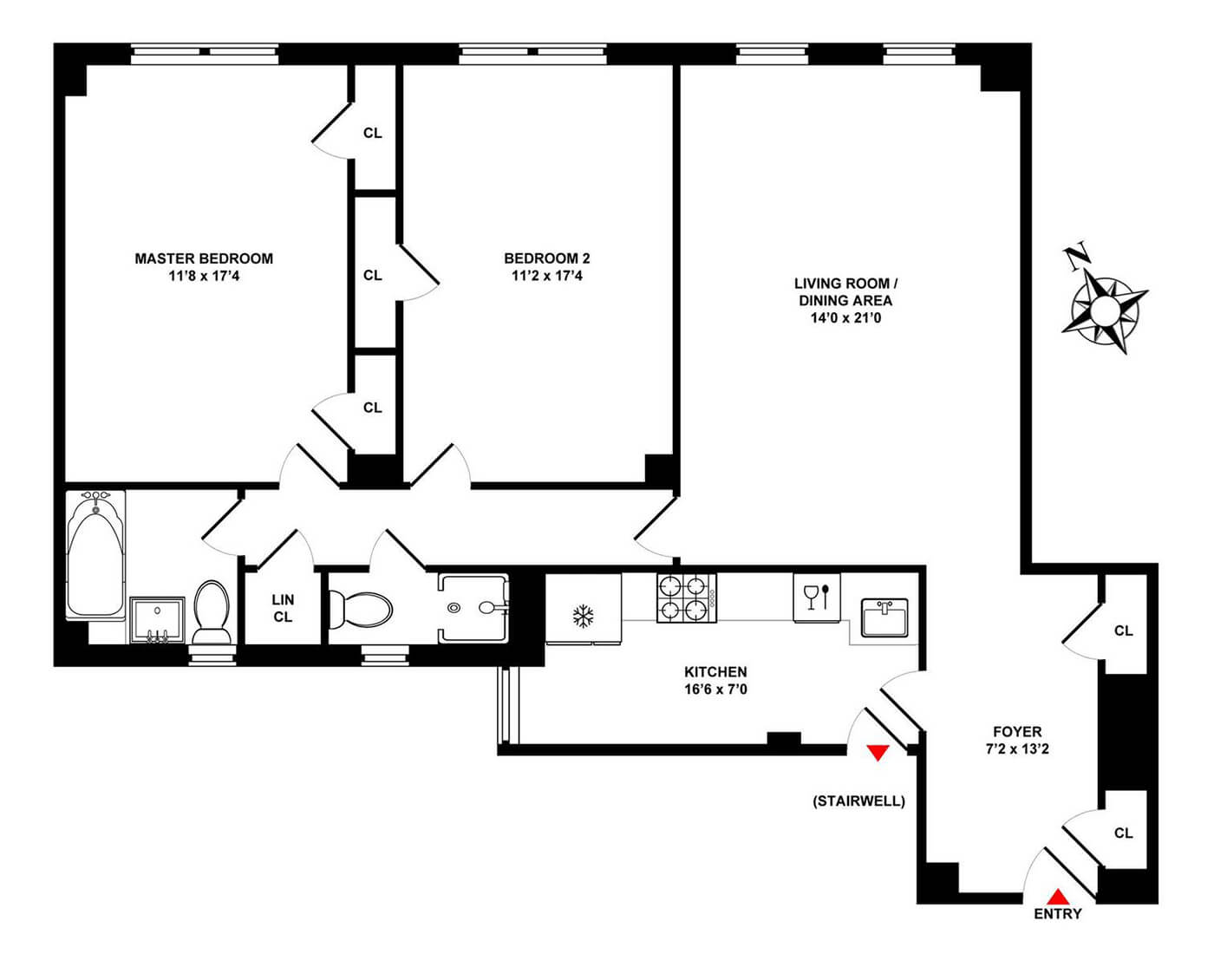What Is a Prewar Apartment and Why Are They Great?
The prewar apartment is a New York City type that conjures visions of prime residences from the era of Dorothy Parker and Cole Porter with thick walls, high ceilings and hardwood floors.

A prewar building in Crown Heights. Photo by Evan Daniels
The prewar apartment is a New York City type that conjures visions of prime residences from the era of Dorothy Parker and Cole Porter with thick walls, high ceilings and hardwood floors.

A quick definition of prewar apartments
A prewar apartment is one that was built before World War II. Authorities differ on whether it includes units built before 1900, but Brownstoner defines it as an early 20th century building type that does not include Victorians, Colonials, or other older buildings.
Up until the turn of the 20th century, townhouses predominated in New York City building construction, but in the early 20th century, townhouses gave way to apartment buildings. After World War II, design and construction changed again.

Advantages of prewar apartments
Prewar apartments boast a “level of craftsmanship that rarely exists in today’s newer buildings,” Brooklyn Properties agent Bret Coladner told Brownstoner. Prewar units often took longer to build and were built to last compared to the speedier methods of post-war construction, he said, and featured hand-finished plaster walls, elaborate tile, and solid wood construction.
Classic prewar buildings tend to maintain their value and appreciate faster than recent condo development, he added.
Tricia Lee Riley of Corcoran praised similar aspects of prewar apartments, noting that the buildings’ design and construction make for sturdy and spacious units.

Common features of a prewar apartment
Prewar apartments typically have distinct rooms, with kitchens separate from living spaces. High ceilings and hardwood floors are common features, as are solid wood doors.
Living areas are typically large, closets plentiful, and there may be decorative details such as beamed ceilings and recessed shelving.
Prewar apartment buildings were, by definition, created before the widespread use of air conditioning, and buildings are often organized around a court or series of courts. These central outdoor areas provide light and ventilation for interior spaces, said David Cunningham of the David Cunningham Architecture Planning firm.
Prewar apartment buildings often have central laundry facilities and storage areas in the basement. Lobbies are often gigantic and elaborate, with coved ceilings, beams, and even faux fireplaces.
Prewar buildings “typically feature elegant and generous lobbies which might even include windows to an adjacent court,” Cunningham added.
Where to find prewar apartment units
Prewar apartment buildings are more common in Manhattan, Queens and the Bronx than in Brooklyn, where townhouses predominate. Nonetheless, they can be found throughout the borough, especially in Brooklyn Heights, Park Slope, Prospect Lefferts Gardens, East Flatbush, and other neighborhoods that saw a building boom in the early 20th century.
Some of the best-known prewar apartment buildings in Manhattan include the Beresford and 740 Park Avenue, both dating from 1929 and designed by famed prewar architects Emery Roth and Rosario Candela, respectively. In Brooklyn, well-known prewar buildings include 2 Grace Court in Brooklyn Heights, 135 Eastern Parkway in Prospect Heights, and 9 Prospect Park West in Park Slope. The latter is known for the extravagance of its units, which typically include fireplaces, libraries, generous foyers, and galleries.
Listings for prewar apartments can be found by selecting prewar as a building feature when searching in Brownstoner’s real estate listings.
Related Stories
Spacious Prewar Co-op With Art Deco Details in Flatbush Asks $595K
What Is a Row House, Anyway?
What Is a Rent-Controlled Apartment, Anyway?
Businesses Mentioned Above
[blankslate_pages id=”d5627e01962508, d53a49ffa1e0ba, d571947da8fc21″ type=”card” show_photo=”true” utm_content=””][/blankslate_pages]
Email tips@brownstoner.com with further comments, questions or tips. Follow Brownstoner on Twitter and Instagram, and like us on Facebook.





What's Your Take? Leave a Comment